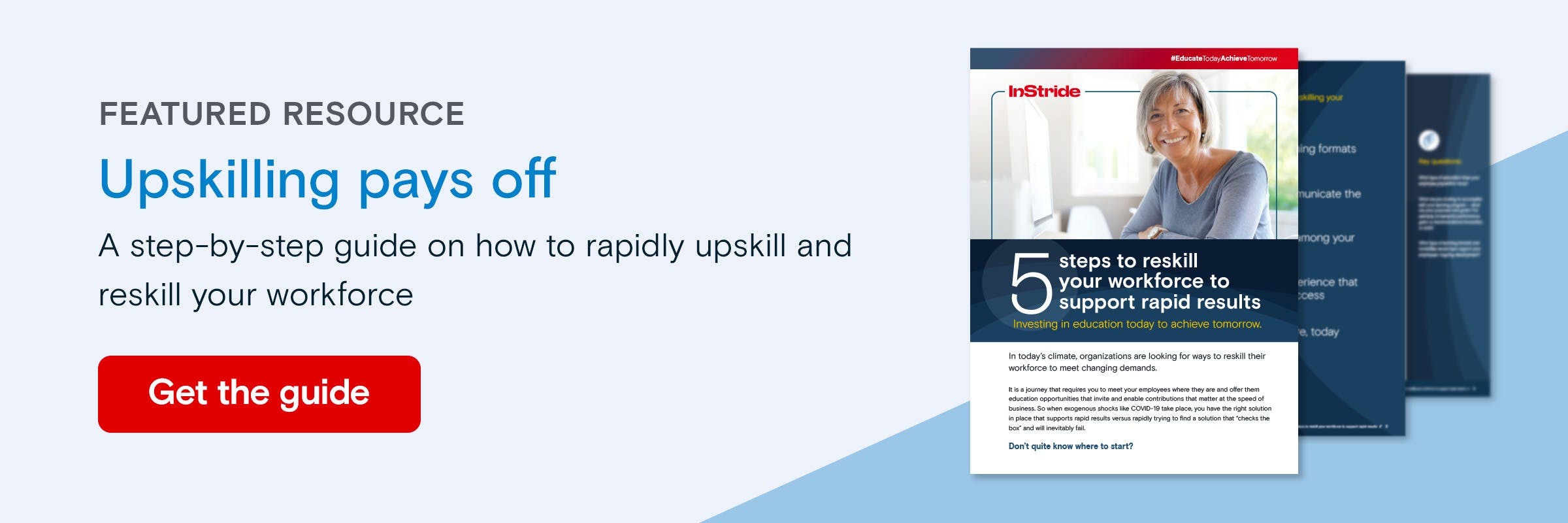With any business function, it’s critical to assign metrics to your efforts that give you insight into performance and allow you to make adjustments accordingly. When it comes to talent development, this is especially important because the metrics you land on are the primary tools you have to measure business growth, organizational attractiveness, and the overall productivity of your workforce.
It’s likely that you already are tracking one (or multiple) metrics as part of your current efforts. But re-visiting your measurement strategy is just as important as having one in the first place. In this article, we’re going to outline the key talent development metrics that every human resources (HR) leader should be tracking and reporting on.
How do you measure talent?
Talent is measured differently across different organizations and industries. It can even be measured differently depending on job description, seniority level, and scope of responsibilities.
For example, someone in sales likely has much different individual performance metrics than someone who works in analytics. And someone in upper management may have different metrics than a new junior associate.
When looking at your talent development strategy holistically, it’s important to hone in on which metrics speak to both business and individual employee growth. This allows you to see a clear picture of which ones are going to be your core, primary performance indicators, and which ones can take a back seat as secondary metrics.
This is especially useful when you’re reporting upwards to higher levels of leadership because certain stakeholders may only be interested in the most important high-level metrics, not the nitty-gritty details.
Talent management metrics and analytics
Talent mobility
This metric tracks the mobility of employees both in and out of a company. In simpler terms, this means whether your employees are moving up and earning promotions within your organization (internal) or whether they are leaving your company for higher-up positions at other businesses (external). Mobility is an important metric for understanding the overall effectiveness of your talent development and workforce education efforts.
Talent turnover
This metric is used to track how often employees leave your company. Turnover rate is a complex metric that can indicate overall success if it’s low, or a number of problems ranging from poor company culture to ineffective onboarding if it’s too high.
Talent distribution
This metric helps you keep track of talent demographic information such as age, nationality, and gender identity. If you notice trends in the data, such as decreasing age in top talent, you can use that information to guide recruiting practices as well as other diversity, equity and inclusion initiatives. This metric can also be useful if you are trying to identify hidden hiring biases within your company.
Read more: Powerful diversity in the workplace statistics you need to know in 2021
High-potential talent
High-potential talent measures the proportion of “promotable” or high-performing talent to the rest of your employees. This metric can give you important insight into the leadership pipeline at your organization, as well as the effectiveness of your employee development programs.
Using this information, you might decide to rethink your hiring strategy and seek out more highly qualified employees or you might revamp existing talent development initiatives to enable improved performance.
Cost to hire
This metric measures the total price tag of hiring a new employee. This includes placing the job advertisement, sourcing costs, time invested by the hiring manager and recruiter, cost to onboard, hiring bonus, and any other expenses that might fall under this category. Tracking cost-to-hire will tell you how efficiently your hiring practices are running.
Time to hire
Time to hire tracks the total time it takes to onboard a new employee. This includes the time between advertising the position to the moment the employee is fully onboarded. It’s similar to the cost-to-hire metric in that it demonstrates your hiring efficiency and efficacy. Understanding which aspects of hiring take longer than others will tell you where any potential bottlenecks in the process might exist.
Time to full productivity per full-time equivalent
This metric tracks how long it takes for a new recruit to reach the standard expected level of productivity after onboarding. This measurement gives you insight into the effectiveness of your new hire training program based on how long it takes new team members to feel comfortable in their new position. A longer time to full productivity measurement may unearth a more widespread problem with company culture or lack of effective training.
Training spend
Training spend refers to the dollar amount spent on training efforts, including both new talent training, continued education, and upskilling programs. Internal training costs will include the worth of the time spent by management or experts in lectures or other upskilling exercises or the amount paid to external professionals or organizations for similar services.
Nurturing talent for advancement within your company means that spending money on continued education is a necessity, but it’s up to you to evaluate how much spend is financially feasible within budget constraints.
Exit interviews
This is a qualitative metric that provides insight into the reason why talent is leaving your company. Garnering candid feedback from former employees will allow you to identify more intangible aspects of the employee experience at your company and take action to address any issues with culture, lack of advancement opportunities or other causes of turnover.
The importance of tracking talent development efforts
As with most business practices, your talent development initiatives can’t be successful unless you have the right metrics in place to accurately track and report performance. With these metrics in mind, you’re in a strong position to showcase your successes and prove the impact of your efforts to your leadership team.
Ready to learn more? Uncover the benefits of reskilling and how it can supplement your existing talent development initiatives.


